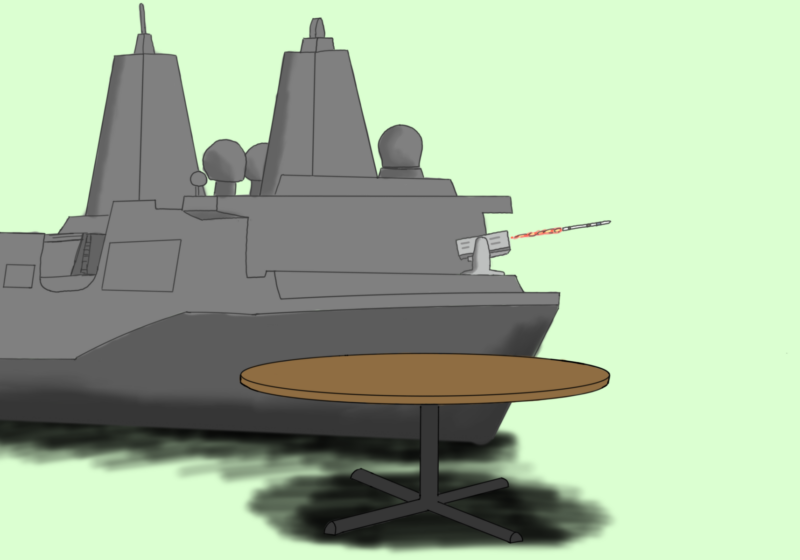“Fury Road” could be described with about equal accuracy as a reboot and as a continuation of the saga. It’s a reboot in the sense that it’s the first film to feature an actor other than Mel Gibson as the titular ex-cop Max Rockatansky. And while “Fury Road” has a fresh plot, it does feature extensive reuse of elements and even entire scenes from the first three movies. The climactic chases from the second and third films are repeated here, sometimes shot-for-shot. It’s a sequel, though, in the sense that no continuity is broken; nothing from the first three films is overwritten. All four movies take place in the same terrible future (which gets progressively worse with each movie). The quasi-Bondian switch from Gibson to Tom Hardy doesn’t change a thing about Max as a character—he’s still as taciturn, haunted, and unkillable as ever.
Film technology has come a long way in the thirty years since “Mad Max 3: Beyond Thunderdome,” and so have George Miller’s finances. The gutter-punk aesthetic and car fetishism of the Mad Max universe are taken to the nth degree here, and the film itself is a violent ballet of visual brilliance. Even the coloring of the film is aggressive, a high-contrast, high-octane palette of orange Namibian deserts and blue Australian sky.
The first Mad Max movie took place in a setting that film pundits might call “five minutes in the future.” It’s an apocalypse movie, but it’s kind-of a slow-moving apocalypse. Law and order are just starting to break down, and the main issue is the dwindling supply of gasoline (“guzzoline,” in the pidgin parlance of the series). There are still homesteads, trees, and a semblance of government. Things get rather worse in the second and third films, set in a barely-survivable wasteland. By the time of the fourth film, civilization is completely in ruins—a nuclear war has poisoned the atmosphere and the soil, and there’s a new order in the three barbaric nation states of the Citadel, Gas Town, and the Bullet Farm.
More than just the colors and the setting have been amped up in Fury Road—the characters, too, are more outlandish than ever. Hugh Keays-Byrne, who played the antagonist and gang leader Toecutter in the first film, is back as Immortan Joe, the greedy warlord baddie of “Fury Road.” Toecutter, while certainly a cruel dude, had something of the petty criminal about him. Immortan Joe, on the other hand, is a full-fledged warlord: He commands a mountainous citadel, an underground aquifer, a fleet of souped-up and deadly vehicles, and an army of devoted-unto-death Warboys who worship Joe as their god and would gladly die in his service.
It’s that relentless grandiosity that makes the movie so wonderful. Sure, the movie might be one long, blood-soaked car chase, but to dismiss it for that would be an injustice. Miller’s towering imagination takes a car chase through the desert and transforms it into an punk fantasy epic. The magic is in the brutal religion of the Warboys, who paint themselves bone-white and huff silver spray paint before they die in battle. It’s in the pure-hearted quest of Charlize Theron’s character Imperator Furiosa. Joe’s most trusted lieutenant, Furiosa sparks the action by going AWOL with Joe’s five “wives”—women he’s raped in an effort to produce a male child untainted by wasteland radiation—in tow. Furiosa is intent on taking them to her childhood home, a barely-remembered paradise called the Green Place of Many Mothers.
“Fury Road” is a movie that was almost never made. It was stuck in the development stage for years, with filming attempts made and aborted in 2001, 2003, and 2007. Finally, thirty years after the end of the first trilogy, the saga continues, and Mad Max fans are very glad it did.




